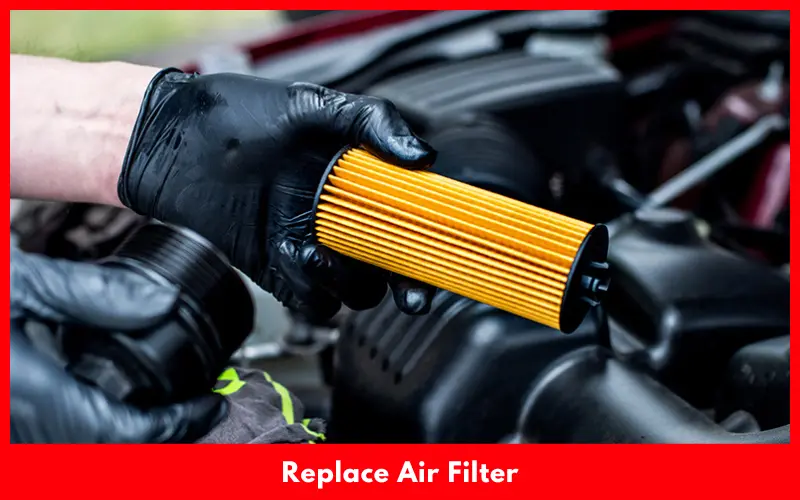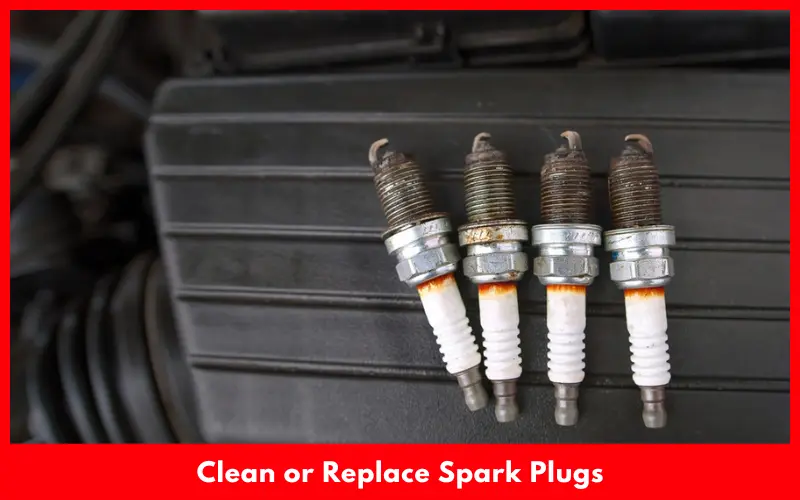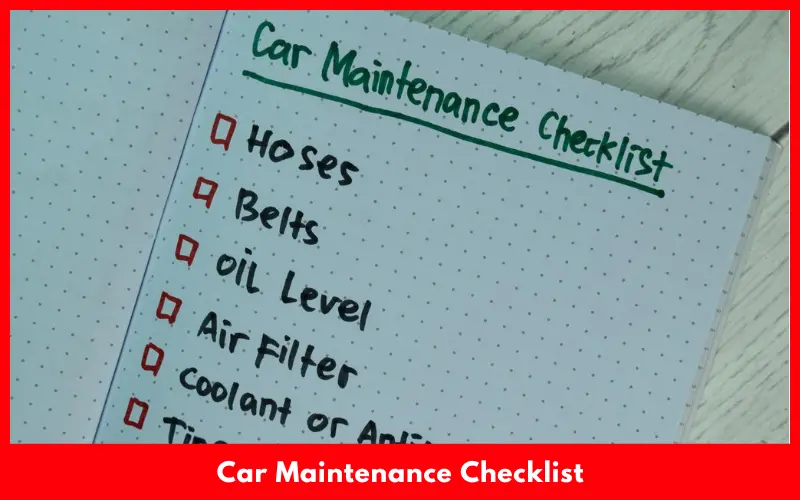Regular car maintenance checklist is crucial to keep your vehicle running smoothly, safely and efficiently. Although some maintenance jobs absolutely must be done by a professional, many regular maintenance jobs can be done by you at home, saving money and time.
Periodic maintenance means your vehicle will be around longer, will be more gas-efficient, and will ultimately cost you less to maintain than if you don’t keep it in good shape. By learning to do some of these basics yourself, you’ll save money and become better educated about your vehicle.
Article Summary
9 Simple Car Maintenance Checklist
First and foremost, these tips should be applied knowing that if done incorrectly, or if you tackle something that requires specific specialised knowledge any number of things could go very wrong, lead to accidents or damage to your vehicle or others.
For each maintenance or upgrade, always refer to your car’s manual, wear appropriate safety equipment, and consult a professional if there’s anything with which you’re unsure.
1. Check and Change Your Oil
One even goes so far as to insist that checking and changing the oil in your car is the most fundamental of maintenance tasks, if not even the first. The fluids take care of some of the friction, which greatly decreases heat.
To check your oil:
- Park on level ground and turn off the engine.
- Locate the dipstick, pull it out, and wipe it clean.
- Reinsert the dipstick fully, then pull it out again.
- Check the oil level against the markings on the dipstick.
- If the oil level is low or it’s time for an oil change (usually at 3,000 to 5,000 miles, but check your manual), you can change it like this:
- Warm up the engine for a few minutes.
- Locate the oil drain plug under the car and place a pan beneath it.
- Unscrew the plug and let the oil drain completely.
- Replace the drain plug and remove the oil filler cap on the engine.
- Add new oil using a funnel, checking the dipstick to ensure the correct level.
Warning: Changing your oil and performing other automotive maintenance can be dangerous. Make sure you know what you are doing before working under your vehicle or with hot oil. Call your mechanic if you are unsure. Use jack stands if you lift your car off the ground. Dispose of your used motor oil in an environmentally friendly way.
2. Replace Air Filter
You need your engine to suck in clean air to work at peak efficiency. A clogged air filter means less air and less power. Replacement is easy:

- Locate the air filter housing (consult your manual if unsure).
- Open the housing and note how the old filter is positioned.
- Remove the old filter and clean out any debris in the housing.
- Insert the new filter in the same position as the old one.
- Close and secure the housing.
- That task comes up every 15,000 to 30,000 miles (check your manual to know for sure).
3. Maintain Proper Tire Pressure
Remember, everything from your safety to your fuel economy and even the lifetime of your tyres can be affected by whether you pump your tyres up to the right pressure or not. Make sure you do this little maintenance tip correctly:
- Check pressure when cold: this is when the car has not been driven for at least three hours.
- Remove the valve cap and press a tire gauge firmly onto the valve stem.
- Compare the reading to the recommended pressure in your manual or driver’s door jamb.
- Add air if needed, or release air if overfilled.
- Check your tire pressure monthly and before long trips.
4. Rotate Tires
Rotating your tires regularly lets them wear down evenly so they last longer. As a general rule, most passenger cars do best with a cross rotation pattern:
- Move the front tires straight back to the rear.
- Move the rear tires diagonally to the front.
- Perform this function every 5,000-8,000 miles. Be sure to tighten lug nuts to specification or the wheel can fall off while you’re driving.
5. Replace Windshield Wipers
Good visibility is important for safe driving. Replace your wipers when they streak or fail to sweep water away. How to do it:
- Lift the wiper arm away from the windshield.
- Locate the small tab on the underside of the wiper.
- Push the tab to slide the old blade off the arm.
- Slide the new blade onto the arm until it clicks into place.
- Lower the arm back to the windshield.
- Replace wipers annually or when performance degrades.
6. Check and Replace Fluids
Regular fluid checks can prevent major issues. Key fluids to monitor include:
- Coolant: Check the overflow tank level when the engine is cool.
- Brake fluid: Check the reservoir level under the hood.
- Power steering fluid: Check the reservoir level with the engine off.
- Transmission fluid: Check with the engine running and in park (consult your manual).
When the approaching icons appear, stop the car, top up the fluids as needed, and then start the engine again. Never top up on the run or overfill, and if you suspect that levels are falling far below ideal levels on a regular basis, take your car to an expert.
Warning: Never open the radiator cap when the engine is hot: pressurised hot coolant can cause severe burns.
7. Replace Battery
Your car might get stranded without a properly functioning car battery. Symptoms of a failing battery are a slow to start vehicle or dim headlights.
- Locate the battery and identify positive and negative terminals.
- Disconnect the negative cable first, then the positive.
- Remove any hold-down clamps and take out the old battery.
- Place the new battery in the tray and secure it.
- Connect the positive cable first, then the negative.
Safety warning: Although batteries look harmless, they contain strong acid and can give off explosive gases. Wear gloves and goggles, and keep sparks and flames away from the battery.
8. Clean or Replace Spark Plugs
These things you must know; the spark plugs are what fire the fuel in the engine, and if the plugs are bad it will run rough and not get as good a gas mileage as it should, and that is why I say that you should replace the spark plugs.

- Locate the spark plugs (consult your manual).
- Remove one plug wire at a time.
- Use a spark plug socket to remove the old plug.
- Gap the new plug according to specifications.
- Install the new plug and reconnect the wire.
- Repeat for each plug.
- This task is typically needed every 30,000 to 100,000 miles, depending on your vehicle.
9. Maintain Lights
Good lighting is essential to safety. Be sure to test your vehicle headlights, taillights, brake lights and turn signals at least once each month. Replacing a bulb is usually a simple affair:
- Access the bulb from under the hood or through the trunk (consult your manual).
- Remove the old bulb.
- Insert the new bulb without touching the glass part.
- Test the light before fully reassembling.
- Always replace bulbs in pairs to ensure even illumination.
- What to Keep in Mind
Above all, by doing these simple maintenance tasks to keep your car in money, and better understand. But most of all own safety! If you’re not confident enough to do a specific task, get some help. These maintenance tasks won’t help you if you’re reckless and get yourself into trouble!
The overall goal of maintaining your car is to save money, sure. But more importantly, proper maintenance is about your safety, and the safety of everyone around while you’re on the road. Afraid to get under the hood and tackle these tasks on your own? Don’t be! Check out these full instructions on maintenance tasks.
End Note
Get started with the easier chores and build up your confidence and competence from there. Maintain a tracking sheet for your cars, and keep up with the basic service over time. You will feel more confident about your car maintenance, have a car in good running condition, and feel a sense of competency worthy of a five-star rating.
Remember the principles of DIY maintenance: know your own limitations, and choose your projects. Your car contains parts and systems you might not need to touch easily damaged, fragile or delicate ones that need specialised tools or expertise.
If you transplant some of your own work carefully and responsibly into the equation alongside the professionals’, you’ll keep your car on the road longer than you think, safely, comfortably, and with minimal expense.

